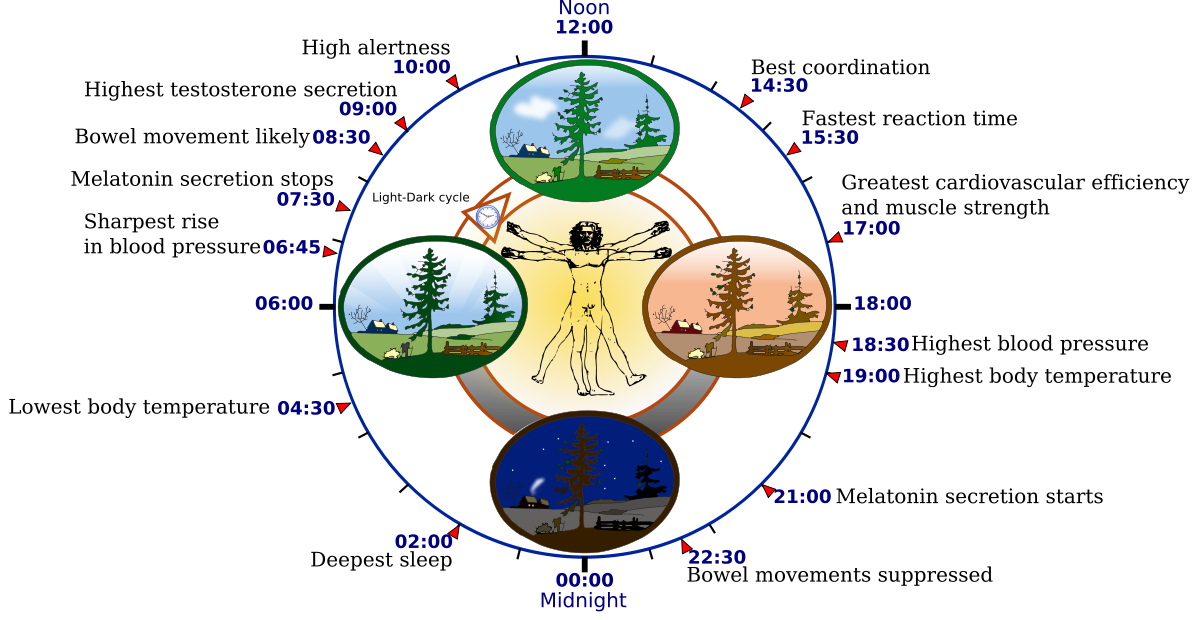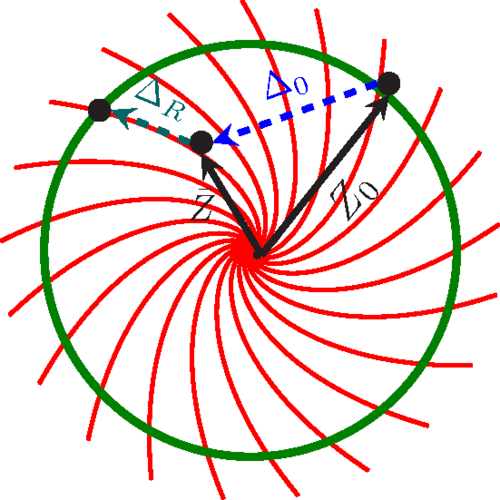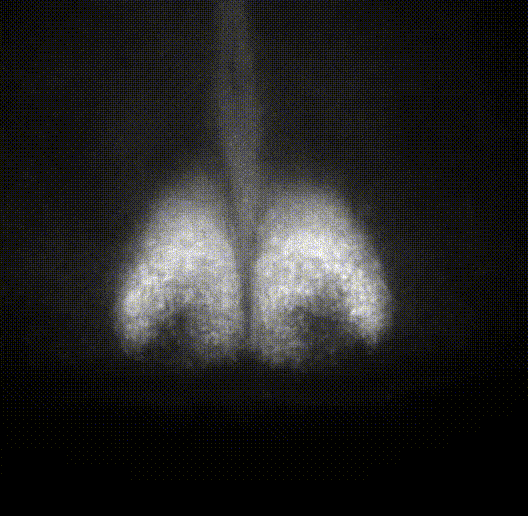
I am broadly interested in applied mathematics and mathematical biology with a particular emphasis on coupled oscillators and neuroscience. One of the principal applications of my research is to circadian rhythms and biological rhythms in general. This field has an incredibly rich history of interaction between mathematicians and biologists, and is a true success story for mathematical modeling applied to biological questions.

Circadian rhythms refer to biological cycles which occur with a period of about a day. In fact in Latin "circa" means around an "dian" comes from the Latin "diem" or day. Circadian rhythms have been found in a wide range of organisms from cyanobacteria, plants, fungi and animals. In humans we show circadian rhythms in sleep patterns, blood pressure, body temperature, attention and many other biological processes in the body.
In addition, humans show circadian rhythms in many behaviors. For example, drug overdoses show a circadian rhythm with a peak at the end of day, when addictive cravings are at their highest. Most births tend to occur in the middle of the night. Single vehicle car accidents tend to occur around 1pm in the afternoon or 3am in the morning when our circadian rhythms are telling us to sleep. Circadian rhythm maladies have been linked to depression and bipolar disorder as well.
One exciting development is that circadian rhythms in the efficacy of prescriptions drugs have been found-which could allow for smaller more effective doses to be taken by patients. This could limit the unwanted side-effects of drugs without reducing their effectiveness on the intended targets.
Circadian rhythms in mammals have been localized to a small region in the hypothalamus known as the suprachiasmatic nucleus (SCN). This brain tissue is made up of thousands of neurons, the majority of which contain a genetic feedback loop which cycles with a period of about 24 hours. Each of these molecular clocks are coupled together so that they produce a coherent circadian rhythm. The SCN is known as the master clock because it entrains the other circadian processes within the body. This emergent behavior from a collection of interacting oscillators provides an exciting opportunity to use mathematics to study biology.

One central question in circadian biology is understanding how the circadian system is entrained to daily cycles. After all a clock which is always wrong is of no use at all! The SCN receives light input through the eyes and is the most powerful entraining force in mammals. One of the most useful tools to study how oscillating systems may be entrained by external forces is the "phase response curve" or PRC. Phase response curves tell you how a stimulus shifts the clock when applied at different times of the day. For example, a classic experiment is shine a light into the eyes of mice each hour of the day and measure how much this shifts their rhythms when compared with mice kept in darkness. If you plot this out over the 24 hour day it gives you an idea of how we can expect light to effect the circadian rhythm at different times of the day and is called a phase response curve.
In humans, light applied during our normal daily schedule only has a small effect on circadian rhythms. However, if we receive light during the early night this shifts the clock backwards. If we receive light in the middle of the night/early morning it shifts our clocks forward. This has significant effects on our sleep patterns as in the modern world we receive light-input well past when our ancestors would have. This leads to us going to bed much later as it sets our clocks back each evening. The long-term health effects of this are just beginning to be understood.
In my research I make use of a powerful mathematical theory called the Ott-Antonsen approach to study how coupling (communication) between oscillators can change the shape of phase response curves. This is motivated by circadian rhythms and neuroscience applications where we have a large population of coupled clock neurons which receive a light message. Each individual clock reacts to this message in a slightly different way to produce an overall shift in the circadian clock. In my work we showed that a more diverse clock population leads to larger shifts in the consensus phase of the population.
Another aspect of my research concerns dimension reduction for models of coupled oscillator populations. Tremendous progress has been made in the last twenty years in understanding the biochemical details of the genetic feedback loop in each clock neuron. This has inspired the creation of very detailed models for circadian dynamics at the single cell level, often with hundreds of variables and a large number of parameters. These models are able to make detailed predictions on the outcomes of specific biological manipulations and have been successful at guiding experimentalists. However, a casualty in creating these detail models can be a loss of intuition-after all it is hard to think about dynamics in very high dimensional spaces.
A major goal of my research is to build a simple low-dimensional model of circadian rhythms which makes maximal use of the biological data accumulated over the last twenty years. My research uses a recently developed mathematical tool called the Ott-Antonsen anzatz which allows a high-dimensional model of coupled oscillators to be reduced to a two-variable system. Currently, I am working on an adaptation of this tool which is tailored to study circadian rhythms. This involves both mathematical analysis and working with raw biological data. As an application of this work my collaborators and I plan to apply this to the study of jet-lag in humans.

Remarkably, the SCN is not only responsible for encoding a daily clock. It also houses the seasonal clock or the body's calendar. However, it appears this information is stored by the whole network of circadian clock cells and not by the individual cells themselves. The SCN network shows beautiful waves of activity as can be seen in the video to the right. As the seasons change this wave is altered to reflect the day-length.
It is thought that the changes in the seasonal day-length causes a variation in the phase difference between two spatial regions in the SCN. In my research we are using simple oscillators models to understand how the circadian clock is able to sense day-lengths and store these in the network of circadian neurons. This work has potential applications to seasonal affective disorder/ seasonal depression. This work could be used to develop better chronotherapies where the disease is treated by timed light pulses throughout the day.